#Indian Traditional Medicine
Text
Trusted & Best Ayurvedic Brands in India - Hakimi Shifakhana

Ayurvedic medicine is the best to cure very long diseases without leaving any ill effect on the human body. Hakimi Shifakhana is the Trusted & Best Ayurvedic Brands in India that help you with best suggestion. Want to start a healthy lifestyle the contact Hakimi Shifakhana today, Visit the website for details: https://hakimishifakhana.com/our-doctor/
Follow Us:-
Facebook: https://www.facebook.com/HakimiShifaKhana01
Instagram : https://www.instagram.com/hakimsadiq52/
Twitter: https://twitter.com/HakimiShifakha1
YouTube: https://www.youtube.com/channel/UCR5ZfPmJgImIvVhaDMoK7eg
LinkedIn: https://www.linkedin.com/in/hakimi-shifakhana/
GMP: https://goo.gl/maps/oD5evGuLsQPXYTkg6
2 notes
·
View notes
Text


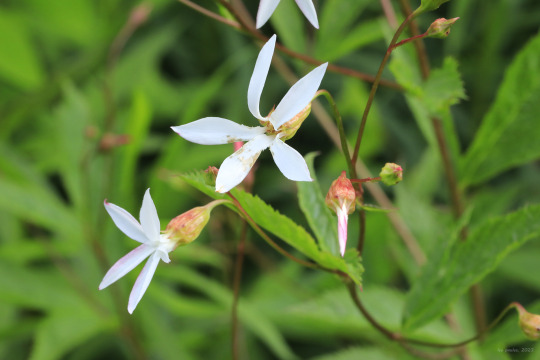


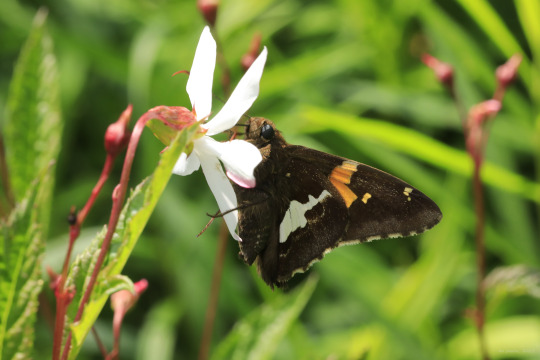
Bowman's root (Gillenia trifoliata), also known as Indian physic, is a perfectly stunning late spring perennial of Appalachia's upland woods, most often found at higher elevations. A member of the rose (Rosaceae) family, the plant has a long history of medicinal use, as both a laxative and emetic, first by Native Americans and then by white settlers. The trifoliate leaves are sharply toothed and alternate on red, branching stems. The white, star-shaped flowers have five sharply-flared petals of unequal length. A lover of partially sunny locations with dry to moist soil, Bowman's root is the perfect pollinator plant for a native wildflower garden and attracts skippers by the hordes, such as the silver-spotted skipper (Epargyreus clarus) above.
Photos from a secluded spot along the Highland Scenic Highway in the Monongahela National Forest.
#appalachia#vandalia#west virginia#wildflowers#spring#flora#allegheny mountains#monongahela national forest#highland scenic highway#june#bowman's root#indian physic#gillenia trifoliata#butterfly#lepidoptera#silver-spotted skipper#traditional medicine
65 notes
·
View notes
Text
it does seem like the conversation around orientalism doesnt always talk about how ppl in the USA have appropriated elements of hinduism and of indian cultural practices. can we talk about that a bit more bc i die a bit inside whenever i see a white person talk about chakras
#tbh this probably fits into a larger discussion around appropriation of traditional chinese and indian medicine into#american wellness culture
30 notes
·
View notes
Text
Shadows at Dawn: Love and Legacy in the Heart of Jaipur's Hospital Halls #ShortStory
Shadows at Dawn
The hospital hallways gleam too brightly under fluorescent lights, a stark, sterile contrast to the murky dawn spreading slow over Jaipur. My footsteps echo, too loud, like the thoughts racing unbidden through my mind as I, Arjun Singh, a pediatrician with more years behind me than ahead, make my way to the NICU. The whispers of the city’s waking float through open windows,…

View On WordPress
#cultural traditions#hospital life#Indian drama#Indian medical drama#Jaipur#Love Story#mentorship#modern medicine#pediatric care#Personal Growth#Short Story
0 notes
Text
youtube
#Medical Consultation &Treatment in India for International Patientsthrough Buddha Healthcare#Indians have access to some of the top hospitals and physicians in the world. They can also receive therapies that are unavailable elsewher#homoeopathy#naturopathy#and traditional Chinese medicine are among India's most prevalent forms of medical care. People frequently utilise these alternative medici#influenza#and headaches.#Additionally#they are utilised to treat cancer and heart disease#which are significantly more severe illnesses. Indians have access to some of the most advanced medical procedures and technologies. India#for instance#has some of the greatest cancer facilities in the world and is developing numerous innovative cancer treatments.#Medical Consultation in India: Medical care in India has advanced significantly during the past several years. Patients today have numerous#whether they prefer conventional or alternative treatments. Ayurveda is one of India's most prominent traditional medical practices.#Ayurveda is a medical system founded on the principle that the body should be in equilibrium. It employs numerous strategies to restore bal#Treatment in India for International Patients:#International patients are increasingly interested in receiving medical treatment in India. This is because the quality of care is comparab#The country has many highly skilled physicians and nurses#and the facilities are modern and well-stocked. In addition#the Indian government is investing heavily in the health care system#which makes treatments more affordable.#Numerous types of medical care are available in Buddha Health care#from cosmetic surgery to heart surgery. International patients can receive the care they require since expenses are minimal and the quality#Get More Details:Online Consultation for Treatment and Medicines in India#Youtube
0 notes
Text
culture tips for writing asian settings: tea varieTEAs
atla's got major Tea Guy representation in iroh but let's be real, even non-tea guys are going to be drinking tea in an asian-inspired setting—you'd be served it instead of water most places. so, what kind of tea are you picking for them?

as an east asian reader, it can take me out of the setting to see the characters drink something like chamomile (from europe/west asia) or... most herbal teas, to be honest. ngl it was weird to see iroh in the show, characterised as a huuuuuuge tea snob, drink stuff like jasmine (it's fine it's just basic, is all! imo!) or like.... a random flower he encounters in the wild.
when we're talking tea, real asian tea, we're talking about the leaf of the camellia sinensis plant. the huge variety we have of tea is actually from the different ways of processing that exact same leaf. popular varieties include:
green: the leaf goes through minimal processing, can have a bright and even leafy/grassy flavour (examples: gunpowder, longjing aka dragon well, matcha, genmaicha)
white: also undergoes minimal processing, with a lighter flavour than even green (examples: silver needle, shou mei)
oolong: the leaf is semi-oxidised, curled, and twisted—can be characterised by a tanniny flavour with a bright aftertaste. my personal favourite! (examples: da hong pao, tieguanyin, dong ding, alishan)
dark (black): note this isn't the same as black tea as we think of it in english. the leaf is fermented to produce an earthy tea with a flavour like petrichor (examples: pu'er)
all the teas listed in the "examples" are fairly credible teas that i think a real tea snob like iroh would drink.

ok, but what about...
"black tea" as we know it in the west—assam and ceylon etc? this variety is actually called "red tea" in chinese. we don't drink it with milk but to be honest, i've just... never really heard of anyone drinking chinese red tea? which is why i've kept it off the list. (there's lapsang souchong, but i associate that with bri'ish people...) anyone who does drink it, let me know! on the other hand something like assam/ceylon, while extremely delicious and also asian, is a product of british colonialism and is consumed with milk. i think if you wanted to massage some of the traditions & have chai-drinking indian-influenced characters, though, that's cool!
do you actually not drink herbal tea? we do... but a lot of it is considered medicinal. we've got stuff like herbal "cooling tea" with ingredients like sour plum, mesona, or crysanthemum; tea that warms you up like ginseng or ginger. the whole concept of hot/cold in chinese medicine though... that deserves another culture post
camellia leaf murdered my family & i have a grudge against it; what else can my blorbos drink? there'a some good, tasty stuff made of wheat, barley, buckwheat, even soybean. wouldn't be egregious for the characters to drink that!
is milk sacriligeous? a real tea snob would think so, but a lot of asians nowadays are chill about milk in tea—usually in western-influenced red tea. hong kong, thailand, india, taiwan, and malaysia (among others) have their own cultures of milk tea, which has even become a democratic rallying point.
what do you think of iroh inventing bubble tea? my main issue with it is it's anachronistic! it was invented in taiwan in the late 20th century, but atla's set in the equivalent of the mid-19th century... you could also make arguments about whether iroh's too snobby about tea to invent it LOL
there's soooo much more i can say about all this so: keep your eyes peeled! i'll talk about medicine & tea ceremony in the near future <3
disclaimer | more tips
#atla#atla culture#atla meta#avatar the last airbender#iroh#asian culture tips#tea#so i'm making this post as not QUITE a certified Tea SnobTM the way iroh is#but i do really love and enjoy many east asian teas#and i start every day off with a cup of strong milk tea (probably reflecting my own cultural heritage tho ;) )#and i do look down on white ppl tisanes. that shit aint good!!
1K notes
·
View notes
Text
Sacheen Littlefeather (Apache/Yaqui/Ariz.), the Native American actress and activist who took to the stage at the 1973 Academy Awards to reveal that Marlon Brando would not accept his Oscar for The Godfather, has died. She was 75.
Littlefeather died at noon Sunday at her home in the Northern California city of Novato surrounded by her loved ones, according to a statement sent out by her caretaker. The Academy of Motion Picture Arts and Sciences, which reconciled with Littlefeather in June and hosted a celebration in her honor just two weeks ago, revealed the news on social media Sunday night.
Littlefeather disclosed in March 2018 that she had been diagnosed with stage 4 breast cancer, and it had metastasized in recent years.
Brando had decided to boycott the March 1973 Oscars in protest of how Native Americans were portrayed onscreen as well as to pay tribute to the ongoing occupation at Wounded Knee, in which 200 members of the American Indian Movement (AIM) faced off against thousands of U.S. marshals and other federal agents in the South Dakota town.
Speaking in measured tones but off-the-cuff — Brando, who told her not to touch the trophy, had given her a typed eight-page speech, but telecast producer Howard Koch informed her she had no more than 60 seconds — she continued, “And the reasons for this being are the treatment of American Indians today by the film industry … and on television in movie reruns, and also with recent happenings at Wounded Knee.”
Littlefeather’s remarks were met in the building by a smattering of boos as well as applause, but public sentiment in the immediate aftermath of her appearance was largely negative. Some media outlets questioned her Native heritage (her father was Apache and Yaqui and her mother was white) and claimed she rented her costume for the ceremony, while conservative celebrities including John Wayne, Clint Eastwood and Charlton Heston — three actors who had starred in many a Western — reportedly criticized Brando and Littlefeather’s actions.
As she was becoming an indelible part of Oscar lore, Wayne “was in the wings, ready to have me taken off stage,” she told the Los Angeles Times in 2016. “He had to be restrained by six security guards.”
Regardless, nearly 50 years later, the Academy issued her an apology.
“The abuse you endured because of this statement was unwarranted and unjustified,” then-AMPAS president David Rubin wrote to her in a letter dated June 18. “The emotional burden you have lived through and the cost to your own career in our industry are irreparable. For too long the courage you showed has been unacknowledged. For this, we offer both our deepest apologies and our sincere admiration.”
Although Brando’s stunt had the intended effect of renewing attention on Wounded Knee, Littlefeather said it put her life at risk and killed her acting career, claiming that she lost guild memberships and was banned from the industry. (In addition, the Academy subsequently prohibited winners from sending proxies to accept — or reject — awards on their behalf.)
“I was blacklisted — or, you could say, ‘redlisted,'” Littlefeather said in her documentary. “Johnny Carson, Dick Cavett and others didn’t want me on their shows. … The doors were closed tight, never to reopen.”
Littlefeather managed to appear in a handful of films (The Trial of Billy Jack, Johnny Firecloud and Winterhawkamong them) before she quit acting for good and earned a degree in holistic health from Antioch University with a minor in Native American medicine. Her work in wellness included writing a health column for the Kiowa tribe newspaper in Oklahoma, teaching in the traditional Indian medicine program at St. Mary’s Hospital in Tucson, Arizona, and working with Mother Teresa on behalf of AIDS patients in the Bay Area. She would go on to serve as a founding board member of the American Indian AIDS Institute of San Francisco.
Via The Hollywood Reporter
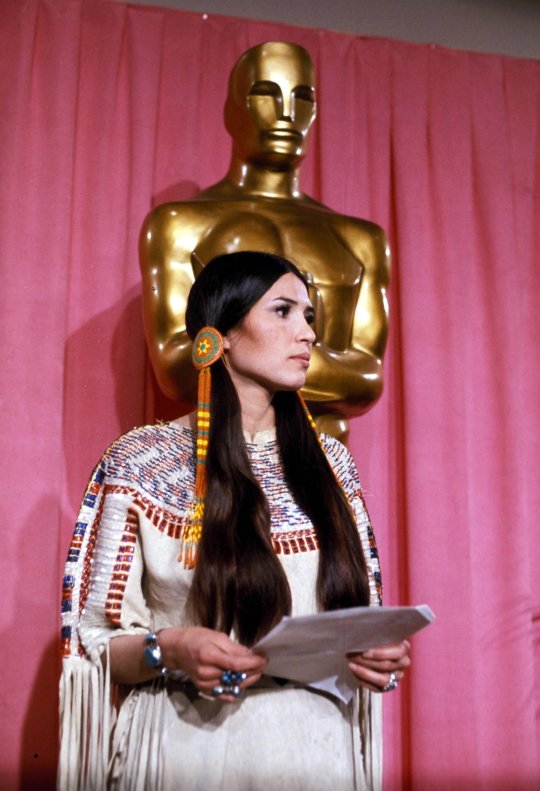
7K notes
·
View notes
Text
Herbalism book reccomendations 📚🌿
General herbalism:
The Herbal Medicine-Maker's Handbook by Green J. (2011)
20,000 Secrets of Tea: The Most Effective Ways to Benefit from Nature's Healing Herbs by Zak V. (1999)
The Modern Herbal Dispensatory: A Medicine-Making Guid by Easly T. (2016)
A-Z Guide to Drug-Herb-Vitamin Interactions by Gaby A.R.
American Herbal Products Association's Botanical Safety Handbook (2013)
Medical Herbalism: The Science and Practice of Herbal Medicine by Hoffman D. (2003)
Herbal Medicine for Beginners: Your Guide to Healing Common Ailments with 35 Medicinal Herbs by Swift K & Midura R (2018)
Today's Herbal Health: The Essential Reference Guide by Tenney L. (1983)
Today's Herbal Health for Women: The Modern Woman's Natural Health Guide by Tenney L (1996)
Today's Herbal Health for Children: A Comprehensive Guide to Understanding Nutrition and Herbal Medicine for Children by Tenney L. (1996)
For my black folks!!!
African Medicine: A Complete Guide to Yoruba Healing Science and African Herbal Remedies by Sawandi T.M. (2017)
Handbook of African Medicinal Plants by Iwu M.M. (1993)
Working The Roots: Over 400 Years of Traditional African American Healing by Lee M.E. (2017)
Hoodoo Medicine: Gullah Herbal Remedies by Mitchell F. (2011)
African American Slave Medicine: Herbal and non-Herbal Treatments by Covey H.C. (2008)
The Art & Practice of Spiritual Herbalism: Transform, Heal, and Remember with the Power of Plants and Ancestral Medicine by Rose K.M. (2022)
Indigenous authors & perspectives!!
Braiding Sweetgrass: Indigenous Wisdom, Scientific Knowledge and the Teachings of Plants by Kimmerer R.W. (2015)
Gathering moss by Kimmerer R.W. (2003)
The Plants Have So Much To Give All We Have To Do Is Ask by Siisip Geniusz M. (2005)
Our Knowledge Is Not Primitive: Decolonizing Botanical Anishinaabe Teachings by Djinn Geniusz W. (2009)
Ancient Pathways, Ancestral Knowledge: ethnobotany and ecological wisdom of indigenous peoples of northwestern North America by Turner N. (2014)
A Taste of Heritage: Crow Indian Recipes and Herbal Medicines by Hogan Snell A. (2006)
Medicines to Help Us by Belcourt C. (2007)
After the First Full Moon in April: A Sourcebook of Herbal Medicine from a California Indian Elder by Grant Peters J. (2010)
Latin american herbalism works!!
Earth Medicines: Ancestral Wisdom, Healing Recipes, and Wellness Rituals from a Curandera by Cocotzin Ruiz F. (2021)
Hierbas y plantas curativas by Chiti J.F. (2015)
Del cuerpo a las raíces by San Martín P.P., Cheuquelaf I. & Cerpa C. (2011)
Manual introductorio a la Ginecología Natural by San Martín P.P.
🌿This is what I have for now but I’ll update the post as I find and read new works, so keep coming if you wanna check for updates. Thank you for reading 🌿
#herbalism#herbal medicine#herbal health#green witch#green witchcraft#green magic#herbal magic#herbal witch#herbal witchcraft#plant medicine#plant magic#plant witch#folk healer#healing witch#healing magic#curanderismo#yerbera#curandera#rootwork#rootworker
2K notes
·
View notes
Text
Reading list for Afro-Herbalism:
A Healing Grove: African Tree Remedies and Rituals for the Body and Spirit by Stephanie Rose Bird
Affrilachia: Poems by Frank X Walker
African American Medicine in Washington, D.C.: Healing the Capital During the Civil War Era by Heather Butts
African American Midwifery in the South: Dialogues of Birth, Race, and Memory by Gertrude Jacinta Fraser
African American Slave Medicine: Herbal and Non-Herbal Treatments by Herbert Covey
African Ethnobotany in the Americas edited by Robert Voeks and John Rashford
Africanisms in the Gullah Dialect by Lorenzo Dow Turner
Africans and Native Americans: The Language of Race and the Evolution of Red-Black Peoples by Jack Forbes
African Medicine: A Complete Guide to Yoruba Healing Science and African Herbal Remedies by Dr. Tariq M. Sawandi, PhD
Afro-Vegan: Farm-Fresh, African, Caribbean, and Southern Flavors Remixed by Bryant Terry
Barracoon: The Story of the Last “Black Cargo” by Zora Neale Hurston
Big Mama’s Back in the Kitchen by Charlene Johnson
Big Mama’s Old Black Pot by Ethel Dixon
Black Belief: Folk Beliefs of Blacks in America and West Africa by Henry H. Mitchell
Black Diamonds, Vol. 1 No. 1 and Vol. 1 Nos. 2–3 edited by Edward J. Cabbell
Black Faces, White Spaces: Reimagining the Relationship of African Americans to the Great Outdoors by Carolyn Finney
Black Food Geographies: Race, Self-Reliance, and Food Access in Washington, D.C. by Ashanté M. Reese
Black Indian Slave Narratives edited by Patrick Minges
Black Magic: Religion and the African American Conjuring Tradition by Yvonne P. Chireau
Black Nature: Four Centuries of African American Nature Poetry edited by Camille T. Dungy
Blacks in Appalachia edited by William Turner and Edward J. Cabbell
Caribbean Vegan: Meat-Free, Egg-Free, Dairy-Free Authentic Island Cuisine for Every Occasion by Taymer Mason
Dreams of Africa in Alabama: The Slave Ship Clotilda and the Story of the Last Africans Brought to America by Sylviane Diouf
Faith, Health, and Healing in African American Life by Emilie Townes and Stephanie Y. Mitchem
Farming While Black: Soul Fire Farm’s Practical Guide to Liberation on the Land by Leah Penniman
Folk Wisdom and Mother Wit: John Lee – An African American Herbal Healer by John Lee and Arvilla Payne-Jackson
Four Seasons of Mojo: An Herbal Guide to Natural Living by Stephanie Rose Bird
Freedom Farmers: Agricultural Resistance and the Black Freedom Movement by Monica White
Fruits of the Harvest: Recipes to Celebrate Kwanzaa and Other Holidays by Eric Copage
George Washington Carver by Tonya Bolden
George Washington Carver: In His Own Words edited by Gary Kremer
God, Dr. Buzzard, and the Bolito Man: A Saltwater Geechee Talks About Life on Sapelo Island, Georgia by Cornelia Bailey
Gone Home: Race and Roots through Appalachia by Karida Brown
Ethno-Botany of the Black Americans by William Ed Grime
Gullah Cuisine: By Land and by Sea by Charlotte Jenkins and William Baldwin
Gullah Culture in America by Emory Shaw Campbell and Wilbur Cross
Gullah/Geechee: Africa’s Seeds in the Winds of the Diaspora-St. Helena’s Serenity by Queen Quet Marquetta Goodwine
High on the Hog: A Culinary Journey from Africa to America by Jessica Harris and Maya Angelou
Homecoming: The Story of African-American Farmers by Charlene Gilbert
Hoodoo Medicine: Gullah Herbal Remedies by Faith Mitchell
Jambalaya: The Natural Woman’s Book of Personal Charms and Practical Rituals by Luisah Teish
Just Medicine: A Cure for Racial Inequality in American Health Care by Dayna Bowen Matthew
Leaves of Green: A Handbook of Herbal Remedies by Maude E. Scott
Like a Weaving: References and Resources on Black Appalachians by Edward J. Cabbell
Listen to Me Good: The Story of an Alabama Midwife by Margaret Charles Smith and Linda Janet Holmes
Making Gullah: A History of Sapelo Islanders, Race, and the American Imagination by Melissa Cooper
Mandy’s Favorite Louisiana Recipes by Natalie V. Scott
Medical Apartheid: The Dark History of Medical Experimentation on Black Americans from Colonial Times to the Present by Harriet Washington
Mojo Workin’: The Old African American Hoodoo System by Katrina Hazzard-Donald
Motherwit: An Alabama Midwife’s Story by Onnie Lee Logan as told to Katherine Clark
My Bag Was Always Packed: The Life and Times of a Virginia Midwife by Claudine Curry Smith and Mildred Hopkins Baker Roberson
My Face Is Black Is True: Callie House and the Struggle for Ex-Slave Reparations by Mary Frances Berry
My Grandmother's Hands: Racialized Trauma and the Pathway to Mending Our Hearts and Bodies by Resmaa Menakem
On Her Own Ground: The Life and Times of Madam C.J. Walker by A'Lelia Bundles
Papa Jim’s Herbal Magic Workbook by Papa Jim
Places for the Spirit: Traditional African American Gardens by Vaughn Sills (Photographer), Hilton Als (Foreword), Lowry Pei (Introduction)
Post Traumatic Slave Syndrome by Dr. Joy DeGruy
Rooted in the Earth: Reclaiming the African American Environmental Heritage by Diane Glave
Rufus Estes’ Good Things to Eat: The First Cookbook by an African-American Chef by Rufus Estes
Secret Doctors: Ethnomedicine of African Americans by Wonda Fontenot
Sex, Sickness, and Slavery: Illness in the Antebellum South by Marli Weiner with Mayzie Hough
Slavery’s Exiles: The Story of the American Maroons by Sylviane Diouf
Soul Food: The Surprising Story of an American Cuisine, One Plate at a Time by Adrian Miller
Spirituality and the Black Helping Tradition in Social Work by Elmer P. Martin Jr. and Joanne Mitchell Martin
Sticks, Stones, Roots & Bones: Hoodoo, Mojo & Conjuring with Herbs by Stephanie Rose Bird
The African-American Heritage Cookbook: Traditional Recipes and Fond Remembrances from Alabama’s Renowned Tuskegee Institute by Carolyn Quick Tillery
The Black Family Reunion Cookbook (Recipes and Food Memories from the National Council of Negro Women) edited by Libby Clark
The Conjure Woman and Other Conjure Tales by Charles Chesnutt
The Home Place: Memoirs of a Colored Man’s Love Affair with Nature by J. Drew Lanham
The Jemima Code: Two Centuries of African American Cookbooks by Toni Tipton-Martin
The President’s Kitchen Cabinet: The Story of the African Americans Who Have Fed Our First Families, from the Washingtons to the Obamas by Adrian Miller
The Taste of Country Cooking: The 30th Anniversary Edition of a Great Classic Southern Cookbook by Edna Lewis
The Tuskegee Syphilis Study: An Insiders’ Account of the Shocking Medical Experiment Conducted by Government Doctors Against African American Men by Fred D. Gray
Trace: Memory, History, Race, and the American Landscape by Lauret E. Savoy
Vegan Soul Kitchen: Fresh, Healthy, and Creative African-American Cuisine by Bryant Terry
Vibration Cooking: Or, The Travel Notes of a Geechee Girl by Vertamae Smart-Grosvenor
Voodoo and Hoodoo: The Craft as Revealed by Traditional Practitioners by Jim Haskins
When Roots Die: Endangered Traditions on the Sea Islands by Patricia Jones-Jackson
Working Conjure: A Guide to Hoodoo Folk Magic by Hoodoo Sen Moise
Working the Roots: Over 400 Years of Traditional African American Healing by Michelle Lee
Wurkn Dem Rootz: Ancestral Hoodoo by Medicine Man
Zora Neale Hurston: Folklore, Memoirs, and Other Writings: Mules and Men, Tell My Horse, Dust Tracks on a Road, Selected Articles by Zora Neale Hurston
The Ways of Herbalism in the African World with Olatokunboh Obasi MSc, RH (webinar via The American Herbalists Guild)
1K notes
·
View notes
Text
Best Ayurvedic Brands in India - Hakimi Shifakhana

The reach of Ayurvedic medicine in India is wide since its inception, with the power of nature and herbs, we can cure many serious diseases. Hakimi Shifakhana is the best ayurvedic brands in India, know for best homemade remedies. Get more details and information here: https://hakimishifakhana.com/
Follow Us:-
Facebook: https://www.facebook.com/HakimiShifaKhana01
Instagram : https://www.instagram.com/hakimsadiq52/
Twitter: https://twitter.com/HakimiShifakha1
YouTube: https://www.youtube.com/channel/UCR5ZfPmJgImIvVhaDMoK7eg
LinkedIn: https://www.linkedin.com/in/hakimi-shifakhana/
GMP: https://goo.gl/maps/oD5evGuLsQPXYTkg6
1 note
·
View note
Text
Atmakaraka series- Part 2
Atmakaraka is the planet with the highest degree in the birth chart.
Short note: atmakaraka can give good or bad results depending on the strength of the atmakaraka planet.

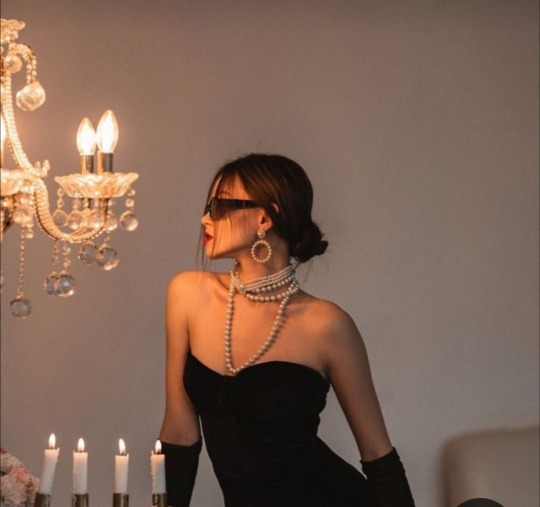

Atmakaraka in 2nd house:-
A person needs to learn how to handle money and they will also have to provide financial support to their family members. (whether or not the person will actually like to help their family depends on the planet and its strength)
Sun Atmakaraka in 2nd house- These people can either be good or bad at managing finances, depending on their relationship with the father. I know a woman with this placement, she is the eldest child in the family and so her father would take her with him to business meetings and basically teach her how to manage the business, she inherited it and now handles everything, and her husband gives all of his earnings to her as well, because he knows that she is better than him at managing money. These people can also be "head of the household", I know another woman with this placement, whose husband died just after 3-4 years of their marriage and she had to take on all of the responsibilities of the house.
Moon Atmakaraka in 2nd house- I have noticed that this is one of the placements where the person WANTS to support their family, as they are very close to them. They want to earn money because they want their family to have a carefree life. Also, I know a girl with this placement whose mother is a great businesswoman and she respects her mother A LOT and always asks for her help regarding 2nd house matters. If afflicted, then the person may not like what their family does for a living, or may not want to pursue the same career as their parents. I know a guy who has an afflicted moon Atmakaraka in 2nd and his parents are doctors and they also wanted him to become a doctor, the weird thing is that he wanted to become a doctor and he was interested in it, but he did not have a good relationship with his parents so he did a bachelors in business administration, JUST TO ANNOY HIS PARENTS....like....
Mercury Atmakaraka in 2nd house- Whenever I look at a politician who is a great orator, I assume they would have mercury in 10th house, but it turns out that they have mercury in 2nd house, These people are really good at selling dreams....not products, they are great at selling things that do not exist. I have seen that a lot of people with this placement earn money by lying to people. I have never met a normal person who has this, it's always actors, singers, or politicians oh, and also people who run NGOs and all and they attend parties to get donations but the money doesn't get used for the kids, it goes inside the pockets of the people who are already rich. These people are also great storytellers and can love working with kids.
Venus Atmakaraka in 2nd house- these people love buying Venusian things, I know a guy with this placement and he's the ONLY guy I know who has scented candles in his home, and he smells so good. These people can also be obsessed with branded things, for ex- if they want to buy a plain white shirt, they will still buy it from Ralph Lauren even if they get THE SAME shirt for like 5 euros from a normal place, it doesn't matter, they will still spend 119 euros, they need to learn to control themselves. They spend money like water, and also I have noticed that some people with this can be classist, they can judge people who buy cheap clothes and eat street food (not all of them do this, only some). Also, your friends can use you for money, so be careful.
Mars Atmakaraka in 2nd house- These people, similar to Venus, can be impulsive with money, but rather than SPENDING money very fast, they want to EARN money very fast and they are prone to taking risks because of this. I know a person with this placement, he was a 38-year-old banker and then he suddenly developed an interest in Ayurveda (traditional Indian medicine), he left his job and started studying Ayurvedic medicine, then he opened his own Ayurveda hospital. Fortunately, for him, it became very successful and now he's earning a lot of money, but if Mars is weak in the chart, and you make an impulsive decision like this, then you could end up losing all your money, so be careful and be patient.
Jupiter Atmakaraka in 2nd house- These people give great financial advice. They can also earn money from the stock market if Jupiter is unafflicted. They can also be great financial consultants because they have this vibe that makes people want to trust them. If you are talking to a person who has this placement and they just randomly say stuff like "You know what, I think this will be the next big thing", INVEST IN THAT because from what I have noticed, these people just have an intuition about this kind of stuff.
Saturn Atmakaraka in 2nd house- It is difficult for these people to earn money, they have to work harder than others just to get the same amount of recognition and praise. In group projects, they are the people who do everything but still don't get appreciated. They can come across as people who are stingy with money, but that's not the case, they don't spend money because they don't HAVE money. If you are someone who has this placement but also has Jupiter in the 11th house, then the situation becomes a little better, also if the 11th lord is well placed then the negative effects of this placement get mellowed down. (Just because you have it in your chart doesn't mean that you will be unlucky regarding money, a lot of other things have to be taken under consideration as well)
(All the pictures are taken from Pinterest)
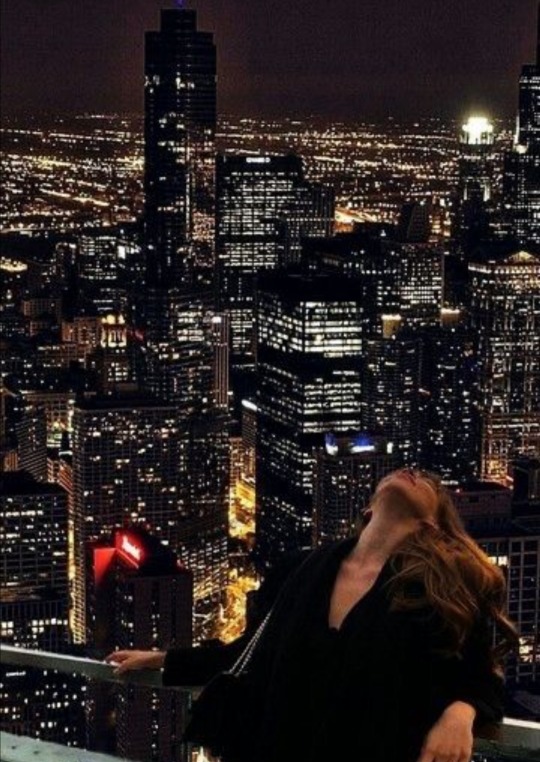
© martian-astro All rights reserved, 2024
#vedic astrology#sidereal astrology#vedic observations#astrology observations#astroblr#atmakaraka#sun atmakaraka#moon atmakaraka#mercury atmakaraka#venus atmakaraka#mars atmakaraka#jupiter atmakaraka#saturn atmakaraka#astro observations
111 notes
·
View notes
Text
Best Supplements for Focus and Concentration:
Omega-3 fatty acids: Omega-3 fatty acids have been shown to improve cognitive function and may help with focus and attention. They can be found in fatty fish, such as salmon, and supplements.
2. Ginkgo biloba: This herb has been used for centuries to enhance cognitive function and improve memory. Some research suggests that ginkgo biloba may improve focus and attention.
3. Bacopa monnieri: Bacopa monnieri is an herb that has been used in traditional Indian medicine to enhance cognitive function and memory. Some studies suggest that it may improve focus and attention.
4. L-theanine: L-theanine is an amino acid that is commonly found in green tea. It has been shown to improve attention and focus and has a calming effect.
It's important to note that the effects of supplements can vary greatly from person to person, and what works for one person may not work for another. Additionally, the quality and purity of supplements brands can vary widely, so it's important to purchase from reputable sources or try out a few different ones to see which works best for you. You can try these individually or purchase combined. Alternatively, you can incorporate more foods that have these ingredients into your diet if you do not want to take supplements pills/powders.
337 notes
·
View notes
Text
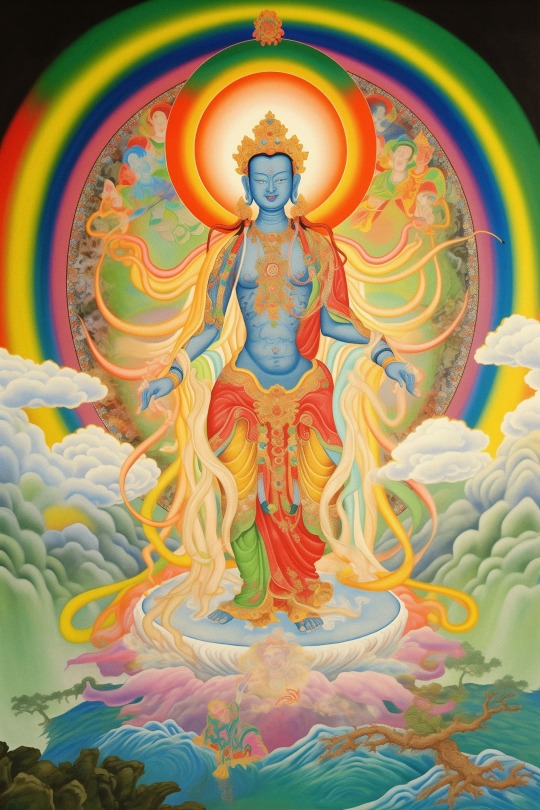
Science and the Rainbow Body
We have looked at some aspects of what modern biophysics, biophotonics, phonics (sound), and neurology can bring to our understanding of the Light Body. And the anatomical discovery of the microscopic primo vascular system and fascial tissue give us new perspectives on tsas, nadis, meridians, and the body’s energy channels in general. But at some point science is left in the dust. It cannot keep up with ancient esoteric knowledge, cooked for millennia in the crucible of direct inner experience, not intellectual theories. This particularly refers to the science of the Five Elements, and the loss and distortion of this knowledge in Western intellectual culture, medicine, and religion.
That massive misstep began long ago. While ancient Greece is taken to be the fount of our Western scientific tradition, it is also where materialism took hold fiercely, relegating scientists to the study of physical objects, functions, and ever smaller components. It’s only now, thousands of years later, that physics—and a good dose of Eastern spirituality—promise a revived view of a living, conscious universe. In nature, and in the realm of biology, it is grids of information-energy that rule supreme. Aristotle, Hippocrates, and Galen could not abide the idea of five intangible formative forces and downgraded the elements into gloppy fluids sloshing about in the spaces of the body. To be fair, this was in response to the Egyptian and Babylonian perspective, held for thousands of years, of the elements as deities. Empedocles famously called these deities “roots,” turning them into a proprietary system and establishing his place in history. But the notion of a space element, already an integral part of Pythagorean knowledge adopted from Egypt and Babylon a century before, was out in the cold. This left us with the fantasy of hydraulic fluids running the body (the humoral theory), which would pervade European and Middle Eastern thought right into the modern era—tainting astrology, alchemy, and reflected in the truncated four-part psychology of Jung, Keirsey, and Myers-Briggs. But while this artifact of materialistic thinking affected a hundred generations of beings, the true knowledge of elemental forces has remained intact, preserved in Tibetan Buddhism, Indian Shaivism, Sufic healing, and the Western gnostic lineages. That is a good thing, since they play a central role in the development of the Rainbow or Light Body. That is as it should be, since it is not myth that we are composed, mind and body, of five dynamic patterns of meaning and manifestation.
In the process of creation, of manifestation, the higher is separated from the lower: gravity and levity, roots and fruits, sky and earth. Now, we reverse the process, climbing back toward union. But a simple reversion to the primordial state, to a pure unity of warm consciousness incomprehensible to our dull intellect would miss the point. Our journey as an embodied five-elemental being is not just a movement within an illusion of time and space where “nothing actually happens.” The return is everything, and in many ways the fulfillment of creation itself. It is the ouroboros, the snake that devours its own tail, the completion of the circle, which is itself empty and contains everything.
This elemental transformation process is commonly portrayed in Tibetan thangkas and repeated in almost every ritual. Within a human skull cup we visualize five kinds of meat (forbidden foods, according to Brahmanical literature) and five kinds of bodily fluids. Their specific names are not important for this discussion, but they represent the Five Elements in their female and male aspects. This mishmash is the sum of our physical existence. Here is biology; here is embodiment; here is incarnation—being in the flesh. But here is the possibility of the birth of a new, non-material form as a vehicle for a renewed consciousness. These elements will be cooked and transformed into wisdom nectar, due to the magical addition of Om Ah Hung. In Tibetan, these three syllables represent form, energy, and consciousness, although I prefer G. I. Gurdjieff’s more colorful nomenclature of “Holy Denying, Holy Affirming, and Holy Reconciling.”
The reason for this transformative possibility in the first place is that the Five Elements exist within us in a multi-layered context. We contain the five material elements, but also the five original, pure Wisdom Elements, the cosmic spark as it were. The Hindu tradition describes five koshas or levels of existence, from gross to subtle, from bioenergetic to pure consciousness. The Buddhist world speaks of three bodies or kaya in a similar spectrum. The Kabbalah describes five worlds in a descending chain of existence. Whether we count in threes, fives, or beyond, the problem remains—how to unite the lower and the higher to create something altogether new. Traditionally, we perceive each of the Vajrayana chakras as the center of gravity of one of the elements—but containing an inner structure of five subelements. And so we have elements within elements waiting to be impregnated with divine radiance and to ascend to their true potential.
Cooking the elements
Down in the depths of our viscera, in the dark recess of the pelvic container, is a secret bindu, an energetic sphere, a “bubble” of immense import. The yogin or yogini will have long prepared, through visualization, mantra recitation, focused meditation, and the gathering of blessings, creative forces, and the richness of material, planetary, biological, and spiritual energies. Prolonged purifications have taken place, readying for this moment. Now, in this most secret of places, the alchemical process, the gestation of a new Light Body begins. Conception took place long ago, in different forms of initiations, meetings with the guru, or even a direct download from transcendent sources. Now the quickening begins, the “cooking” process. As in our visualized skull cup of animals and fluids, we ignite the fire in the belly and fan it with the reversed turbulence of our “downward descending wind.” The digestive and liver fire is harnessed, and winds are drawn down and held in the vase of the belly. The anus and lower doors are drawn up and sealed. As the sub-navel furnace blazes, the Earth mandala in the belly dissolves and is drawn upward by a natural osmosis, the force of levity, of ionic attraction, in the oldest dance in the universe.
Spiral dynamics
In this “mating” process, the flame rises up to melt the Wisdom Elements dwelling in the head. This inner heat or tummo process involves spiral energies. The heavenly father energies move clockwise, always. The earthly mother energies move in an anti-clockwise spiral, always. This is clearly seen in the way that a mantra circles within the heart, depending on whether one is self-visualized as a male or female yidam or deity form. The male mantra circles to the right and the female mantra always circles to the left (from the perspective of your own body’s orientation). Spiraling down, the flow moves through the chakras producing the “four joys.” But it spirally ascends to the head again, thrusting through the chakras with another more intense effulgence of innate bliss and the experience of pure awareness (or emptiness, as it is misleadingly called).
By this process, each element in its lower or biological state is transformed, united with and blended with its wisdom form. But what is very surprising here is that, in the Vajrayana tradition, the story somehow ends. We rest in this new state of unfabricated being-knowing, merging it with various aspects of mundane existence, including arising thoughts and feelings and experiences. All is painted with a new brush. The “doors of perception” are cleansed in a utopian brave new world of consciousness.
Beginning, not ending
But the journey is far from over. What has been described above in traditional terms involves a massive movement within the water-based electron grid of cells and interstitial tissue. It is a volcanic eruption and lava flow of the packets of massed biophotons from the cerebrospinal fluid and brain’s ventricles. We have every reason to understand that photons are the vehicles of consciousness—or that consciousness is an intrinsic quality of photons. And we have clear indications that the structured water in cells, tissues, and blood is the electron-source of prana or lūng itself. As a result of this co-mingling of side-to-side, front-to-back, and finally top-and-bottom, the Light Body begins to form in earnest. Each of the elemental chakras is now part of the Rainbow anatomy containing a mandala of subelements brimming with pristine Wisdom Element force. Channels, energy, and consciousness—tsa, lūng, and tiglé—are all benefactors of the primary template of all things: the Five Elements known as Earth, Water, Fire, Air, and Space.
Rainbow Body by Talon Abraxas
Rainbow Body by Talon Abraxas
20 notes
·
View notes
Text
KJ Charles has breathtaking range. And it's all so organically diverse and vivid and excellently paced and clever.
Doomsday books -- Smugglers of Romney Marsh in 1810–20s in the wake of the Napoleonic Wars.
Society of Gentlemen -- Clash between the royalist establishment and radical republicans in the last years of Regency.
Sins of the Cities -- Small businesses and trade of the Industrial Revolution in London's immigrant quarter (taxidermy of all things!), Victorian spiritualists and musical hall artists in the 1870s.
Lillywhite Boys -- London criminal underworld, bluestocking feminists, private detectives, colonial gem trade, the rise of industrialists in the 1890s, and pre-Victorian folk Christmas traditions.
Charm of Magpies -- Shanghai traders and Chinese immigrant communities of London in the late 1800s.
England World -- Nascent British intelligence agencies and new technology in the shadow of the Boer War in the 1890s + integration of Indian nobles from its last kingdoms with elite British society + classism and xenophobia in British antisemitism
Will Darling Adventures -- The reverberating social, political and economic changes from the aftermath of WWI and further development of intelligence organisations during the 1920s.
Just finished Band Sinister, which touched on Hellfire Clubs, the emergence of new medicine, atheism, and challenge Creationism from the fields of natural science, and Black British life before abolition. Currently reading Unfit to Print, which seems to be about London's underground pornography trade with character focus on the shared plight of Black and Indian immigrants from the colonies and their mixed race offspring. Charles's body of work really brings home that the 19th century was a full hundred years long and the distinct character of every decade. And that the real and authentic history of Britain had people of every race, religion, colour, disability, neurodiversity, gender and sexuality who have been deliberately erased by the same power structures that kept them disenfranchised and ghettoed back then.
#british history#british culture#black britain#british immigrants#british colonialism#historical fiction#queer history#queer historical fiction#queer historical romance#mlm romance#kj charles#book recs#book recommendations#knee of huss
29 notes
·
View notes
Text
In regards to the arrow removal, I think a lot of people are not considering the context in which Nynaeve made the decision. And I am here to defend my wife, obvy.
For starters - they're going to Egwene, who Nynaeve refuses to think of as anything but 100% FINE AND OKAY AND DEFINITELY NOT TRAUMATIZED. And Egwene can channel which means she can heal.
Nynaeve spent enough time in the tower to basically see the impossible compared to her knowledge of healing before. Suddenly a lot of her knowledge is irrelevant because the one power can fix things better than she can with traditional medicine. Nynaeve is stubborn, but she takes healing seriously. She'll always choose the best option.
That informs her decision. The most important thing is getting Elayne off the active battlefield and to Egwene for healing. The closest I can think of is Star Trek - you wouldn't treat a wound when in ten minutes it's going to be gone, you just need to get the injured person to the doctor.
(Side note but I don't believe she had anything on her to even treat a wound at the time, either, given the sul'dam costume.)
Now, I've gone through a lot of first aid training due to various jobs I've held, so I'm right there with everyone saying not to take it out! You do not take the thing out. Never, ever, ever. Pulling/pushing it out can cause more damage and more bleeding and no one but a medical professional should be touching that sort of injury. This is a modern approach though! Remember, context.
I've seen a lot of people talking about her breaking the shaft before pushing it through, but that would actually be worse. There's no way to cleanly break the fletching away, which means by tugging it through she'd be introducing splinters of wood into the wound. Also the breaking is in regards to arrowheads, not the fletching.
The fletching (feathers on the back) is not actually the dangerous part of the arrow. I've seen some people say it was a crossbow bolt, but either way, from what we were shown the arrowhead itself had exited Elayne's leg already. If that was the case, pushing the shaft through wouldn't actually be harmful to her. It would hurt like hell, but it wouldn't cause any more damage.
I tried finding some actual sources for this specific scenario, but unfortunately most articles are focused on removing the arrowhead and not the shaft (and were also paywalled, boo). The closest I found was information from U.S. Army Surgeon Joseph H. Bill who essentially catalogued American Indian arrows as a way to determine the best removal technique.
He advised not applying traction to the shaft due to the likelihood of the arrowhead coming lose and remaining in the body, but I couldn't find what he advised if the arrowhead had already passed through the body although I did find this quote "An arrow may be pushed out as well as plucked out."
I DID find this lovely gentleman giving a very in depth discussion on medieval arrows as well as removal techniques and some of those are shove it through and hope for the best. (He also mentioned that healing the infection was what doctors and healers handled rather than wounds which... wow. Remind me to never be a medieval soldier in case I ever get that longing.)
So, yeah. I trust Nynaeve was right about her approach to the wound, and I feel like this is a case of a modern audience not trusting her knowledge because of our own knowledge of how those injuries are approached currently. I do think the scene could have been improved (in that regard) if they had Nynaeve explain her thought process, but overall, we got the point: Nynaeve felt like an utter failure, she couldn't help her friend, she couldn't do anything with all her alleged power. What good is she to her friends?
55 notes
·
View notes
Text
6 Black Gods of Ancient America You Should Know
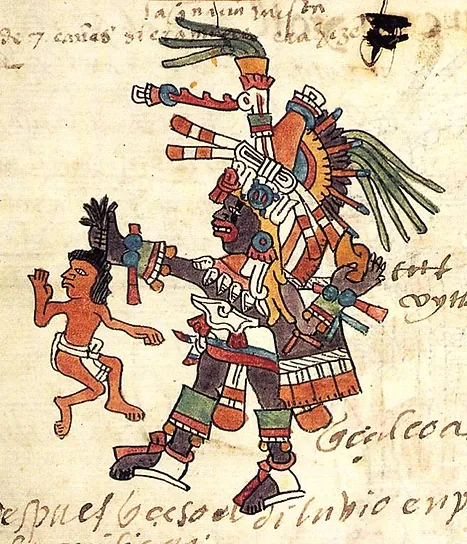
"Several Indian nations, such as the Mayans, Aztecs, and Incas, worshipped black gods along with their other deities, and the Mayan religion particularly exemplifies the high esteem in which the negroes were held." --Harold G. Lawrence, The crisis, 1962
Why were all indigenous religions and spiritual systems deemed as "pagan" or "evil"and were replaced during colonizations? It would be hard to subjugate a people who were previously worshipped without replacing old traditions with new ones. Lets examine some of the anicent gods found right here in America before colonization. "Many Scholars have noted, the Black gods of the Americas are typically gods of
medicine and healing, trade, or music and dance. According to these scholars, these associations are based on the traditions introduced by actual Black people."
1. EKCHUAH, THE BLACK STAR

EKCHUAH, was the sixth most commonly depicted deity in the Mayan codices, protrayed at least forty times. He is painted Black with thick lips, His name means "Black Star" (ek means "star" and chuah means "black" in Yucatan Maya). Flod Hayes III reports that among many of the Indians of Guatemala, "the black Christ is referred to in private as Ekchuah," who Harold Lawerence describes as "black and woolly-haired" and "unmistakenly Negro." In Africa and the Discovery of America, Leo Weiner connects the Mayan god Ekchuah to the African Nama societies of the Malinke and Bambara people of West Africa. Ekchuah may have been based on an older Black god, known to us only as God M.
2. GOD M
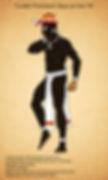
God M is represented throughtout the ancient codices as a Black god, specifically an "old man" with a toothless jaw or one tooth. He appears to be a trader, often shown carrying goods on his head. In volume III of Africa and the Discovery of America Leo Weiner says West Africans like Malinkes and Bambaras made voyages to the Americas long before Columbus. He identifies many of the Mayan and Aztec gods as being derived from the reverance paid to these Black visitors.
3. THE MAYAN PRIESTS

Frederick Peterson, In his 1959 work Ancient Mexico, remarked: " We can trace the slow progress of man in Mexico without noting any definite Old World influence during this period (1000-650BC), except possibly a strong Negroid substratum connected with the Magicians. "
The Magician may have been West Africans who traveled to Mexico or a class of Black people who could ONLY marry among themselves, effectively presereving the African phenotype over untold generations. This reverence for Black people may have something to do with why many Native Americans, inculding the Mayas, respected enslaved Africans and revered Black gods that represented the principles of healing and good fortune.
4. TEZCATLIPOCA, THE AZTEC GOD
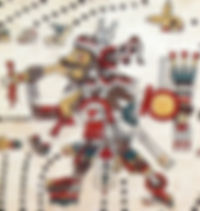
Tezcatlipoca was one of the most important gods in ancient Mesoamerica. He began as important diety for the Toltecs and later became the supreme god of the Aztecs. He was seen as a Creator, the god of sustenance, a patron god of warriors, and the bringer of both good and evil. "Black Tezcatlipoca" is the most feared and highly revered. The earliest representations of him represent him as black. His priest would cover themelves in black soot or charcoal to associate themselves with the Black god. They would also paint the newly appointed king black to associate him with Tezcatlipoca.
5. KOKOPELLI, THE GREAT HUNTER
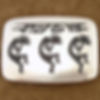
Kokopelli is a well-known fertility god and hunter among the Hopi and Zuni people of the America southwest. As the spirit of fertility, he is seen as responsible for introducing corn (agriculture) to various peoples across the Americas. Kokopelli was first found in Anasazi rock cravings, but he also appears in Missippian artifacts. Throughout South America, he is known as Ekoko. He is believed to descend from the Mayan Ekchuah. Kokopelli is identified with the southwestern Tewa people's god Nepokwa'i, a great hunter who is described as "a big black man."
6. BLACK GOD OF THE NAVAHO

Among the Navaho, there is a deity known as Black God. He is not widely-celebrated, but is very important because his knowledge of medicine saved the rest of the Navaho gods from certain death. Black God is the Navajo god of fire. Perhaps because of this, he is also considered the creator of the stars. He is often depicted as black "like space" and wearing a crescent moon on his forehead, with the stars of Pleiades dotted on his temple. But Black God was most likely a medicine man before he came to be known as the god of fire.
Article Source::
Black God: An Introduction To The World's Religions And Their Black Gods by Dr. Supreme Understanding
21 notes
·
View notes